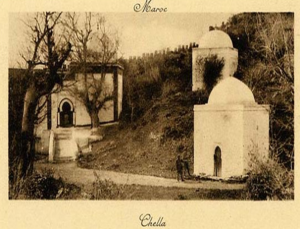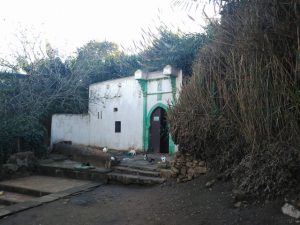
Following the fall of the Merinid dynasty, al-Maghreb al-Aqsa moved away from the authority of tribal Amazigh leaders and away from the image of the Saharan Almoravids or the Almohads masters of mountainous territories. Because the resistance against Portuguese colonization in the 15th and 16th century emerged from the rebellious Moroccan territory south of Fez. This territory hasn’t been under the centralized control for over two hundred years when the leaders of the tribes/communities decided to uniteunder a leader: al-Qaim bi-Llah and drive off the Portuguese. However, they continued to conduct trade with European powers and profit economically from the resources of Morocco and the growing needs of Europe.
 This accession to power of the first Arab dynasty since the Idrissids was that of the Sa’dis, later the Alawits took power in light of the same ideology. This new ideology is that of respect towards and submission to the descendants of the prophet. The people gather around wise Sharifs (literally noblemen but means descendant of the prophet in the Moroccan context) in the shrines or zawiyas (literally corners) of their ancestors and heed to their advice, the people come to ask for advice and guidance or to commonly pray.
This accession to power of the first Arab dynasty since the Idrissids was that of the Sa’dis, later the Alawits took power in light of the same ideology. This new ideology is that of respect towards and submission to the descendants of the prophet. The people gather around wise Sharifs (literally noblemen but means descendant of the prophet in the Moroccan context) in the shrines or zawiyas (literally corners) of their ancestors and heed to their advice, the people come to ask for advice and guidance or to commonly pray.

To this new Morocco, visits to marabous, shrines are central. Seeking an intermediary between them and God, although forbidden by Islam and especially by the Sunni doctrine was in large practice.
In the 16th century many of the archaeological sites, which were not recognized nor understood, became vacant and dubious. To make them less so, the local populations implanted saint’s shrines to give a holy purpose to the sites.
In Chellah are five marabous, four of which are in good condition and are well kept, and the fifth is in ruin. Two of the marabous are of women saints: Lalla Chama Regraga (her power described like horses fighting in speed) and Lalla Sendaja (the wish granter). The three other saints are Sidi Aomar el Mesnaoui, Sidi Yahya (master of the water genies), and Sidi Lahcen al-Imam (a former Imam in Chellah).
19th century Rabat nobility were also buried next to the marabous of these saints. It was perhaps a way to be closer to God or a wish to be companions of the saints, sultans, and noblemen buried on the site.


